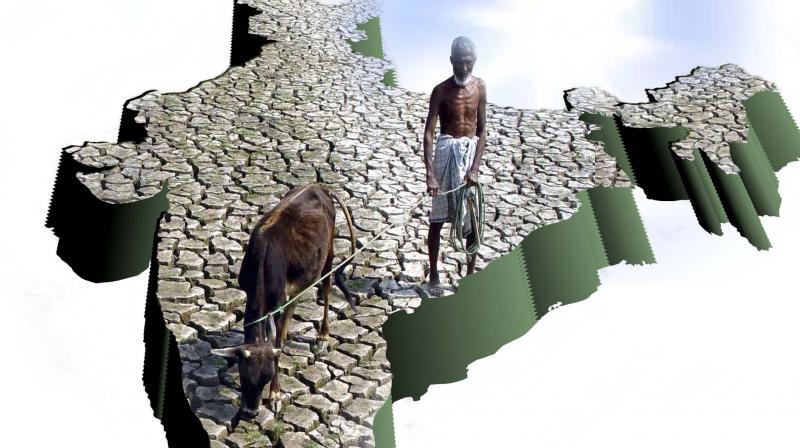360 Degree: Red earth, no pouring rain
Australia also made much larger, comprehensive investments in water conservation and efficiency.

In May 2016, the Indian Meteorological Department declared that India must brace herself for more frequent, intense droughts over the next three decades. As inadequate monsoons become the norm in an agrarian economy driven by rainfall, groundwater levels deplete and dam storage hits dangerous lows, it’s time to step up and save the resource we all take for granted. Through sustainable farming and integrating technology with conservation efforts, experts say water use can be measured and controlled down to the last drop All we lack is the will..
It was just a year ago when I wrote about the conditions that cause drought. Here we are again, looking at a dangerous dry spell again this summer across the country. Are we really listening to the planet? Last year, more than 1,600 people died due to extreme climate conditions. Of them, 700 died due to heatwave conditions. Have we learnt any lessons from the last year? What have we done with these lessons?
We don’t still have a widespread awareness of climate change and its devastating effects on the planet, which affects every part of the world, including Karnataka. We refuse to acknowledge the fact that as we continue to burn fossil fuels, we emit dangerous greenhouse gases that is causing global warming, which is leading to extreme climate events like floods and droughts.
The reality is here! 2016 has been recorded as the hottest year since 1901. Phalodi in Rajasthan recorded 51 degrees Celsius, the highest ever recorded in the country. This January has been recorded as the eighth warmest since 1901.
As global temperatures continue to increase, the Earth’s water cycle intensifies even more, causing extreme drought events! This may seem counter intuitive – but the same extra heat that evaporates water from the ocean pulls moisture even more quickly from the soil. More water also evaporates more quickly from the soil, making droughts deeper and longer.
Read: Don’t rain on the monsoon parade
The twin brother of drought is forest fires. A study done in the USA between 1970-2010 shows a direct correlation between drought and incidence of forest fires, according to Climate Central, in its article titled, ‘The Age of Western Wildfires’. The recent fires in Bandipur forest is fresh in every one’s mind, where the the most suffering has to be endured by the most vulnerable of all creations – the defenceless animals.
The Indian Central Water Commission in its bulletin of April 7th, 2016 reported that the water storage in the 91 major reservoirs across the country dipped to 37.92 billion cubic meters, which is just 24% of the total storage capacity of these reservoirs. No one noticed this news last year. Then, the Indian Meteorological Department released a report predicting a normal to above normal monsoon and the Sensex climbed a couple of hundred points. What does this prove? We human beings like good news and respond to it quite quickly, and we like to ignore bad news.
The people in the Southern parts of Australia could not ignore bad news, as they went through the ‘millennium drought’ from 1997 to 2010. Australia’s cities and towns survived the millennium drought, through exceptional examples of urban water planning and management driven by crisis. These measures included mandating the change of washing machines, toilets, cooling towers, shower heads, taps and industrial processes to do more with less.
Australia also made much larger, comprehensive investments in water conservation and efficiency. By the time drought ended in 2010, one in three Melbourne households had a rainwater tank. Many had built retention ponds to contribute to the urban water supply. Highly treated sewage water was used to irrigate farm fields, and infusions of drinking water into bone-dry streams to help wildlife were halted. All told, residents and commercial users slashed their water use to a miserly 41 gallons (155 liters) per person per day by 2010 — half the rate of 1997, when the dry period began.
We need to learn from global examples, so that we are better prepared for droughts, but we are not. It seems that while the ground is parched, our mind is also dulled into inaction. Or is it that we just do not have the collective will as a nation to attend to it?


